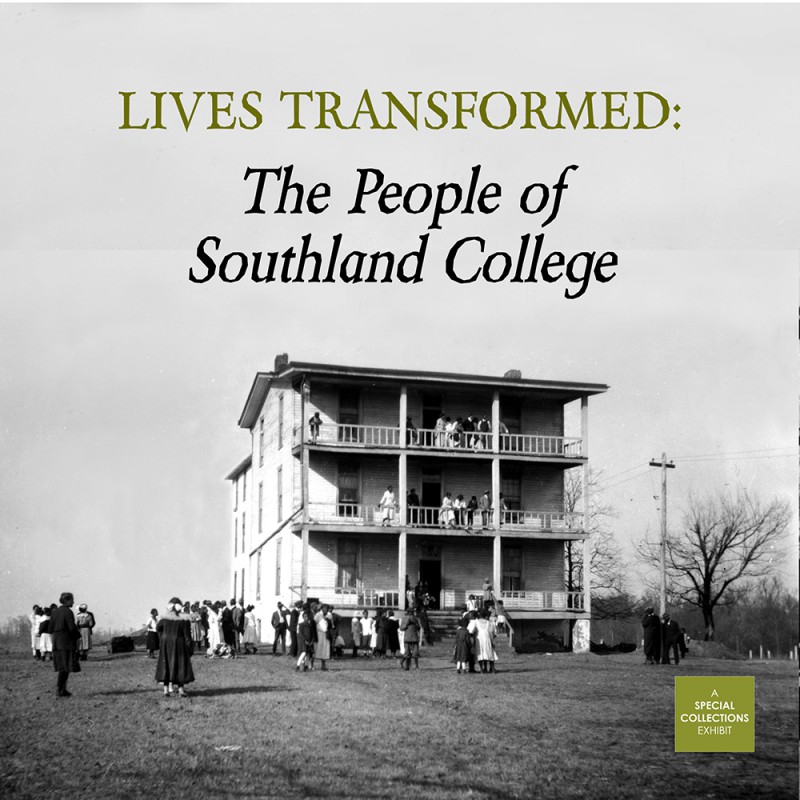Lives Transformed: the People of Southland College
In celebration of Black History Month 2016, the Libraries' Special Collections presents images from the Southland College Papers (MC577). In the faces of the students and teachers of Southland College we glimpse more than sixty years of African American experiences, aspirations, and triumphs as the United States underwent tremendous transformation from the era of the slavery into the 20th century.

To learn more about the unique story of Southland, Thomas Kennedy's book, The History of Southland College: the Society of Friends and Black Education in Arkansas is available from the University of Arkansas Press.
Thousands of students and teachers passed through the humble wooden structures nine miles northwest of Helena, Arkansas. Began by Quakers from Indiana as an orphanage for refugee slave children as the Civil War still raged, the Friends' Freedman Committee appointed Calvin and Alida Clark to form a school April 19, 1864. The earliest buildings came through donations and the voluntary labor of the 56th U.S. Colored Infantry Regiment during Reconstruction.
Within ten years Southland College's enrollment grew to more than 200 students under the Clark's guidance, and the Indiana yearly Meeting of the Quakers made the school a diploma granting institution in 1876. Southland made great strides toward satiating the overwhelming longing for literacy felt by former slaves and addressed the acute need for educated teachers and professionals around the country as the African Americans of the Delta moved in search of greater opportunity.
Anna Strong exemplifies the transformative power of education provided by the school. Before her election as president of the Arkansas Teacher's Association, her creation of the Key School's Program for the Arkansas Department of Education, or the other numerous honors she received, Strong was a student at Southland. She began teaching others at age thirteen, and after finishing degrees at the Tuskegee Institute in Alabama and Columbia University, Strong returned to the Arkansas Delta to become principal of the Robert Morton School in Marianna in Lee County, where she served for thirty years until 1957, a career that began in the darkest depths of segregation and saw the first signs of school integration.
H.C. and Anna Wolford became principal and matron in 1903 after several years of falling enrollment and instability, and the school reached its peak enrollment of more than 400 students in the years before World War I. After several changes in name and direction by national Quaker groups, lingering financial problems eventually caused Southland College to close in 1925 despite the pleas of Strong and other supporters and alumna to see their beloved school continue to nurture generations of African Americans from the South.
Find more information at https://uark.as.atlas-sys.com/repositories/2/resources/1609.
(Click thumbnail image to enlarge.)
